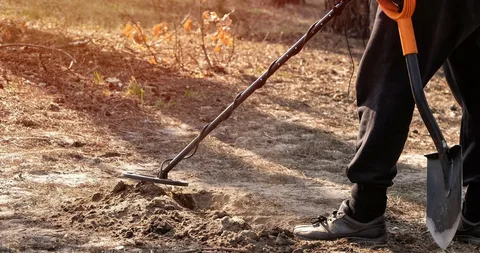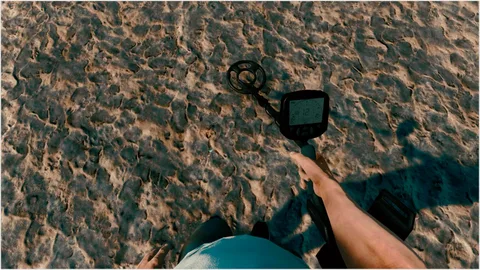Discover the Latest Advances in Rock Drilling Equipment
Rock drilling equipment has seen significant advancements in recent years, leading to increased efficiency and productivity in various mining and construction projects. In this article, we will explore the latest developments in rock drilling equipment, from innovative technologies to improved design and functionality. Whether you are a mining professional, construction contractor, or equipment enthusiast, this guide will provide valuable insights into the cutting-edge tools and https://cell-seo.com/dashboard/strategies/922 techniques revolutionizing the rock drilling industry. Join us as we discover the latest advances in rock drilling equipment and the impact they are making on the field.
Discover the Latest Advances in Rock Drilling Equipment:
There have been significant advancements in rock drilling equipment in recent years, including improvements in drill bit design, drilling power and efficiency, and drilling technology. These advancements have resulted in increased productivity and reduced downtime for mining and construction operations. Some of the latest developments in rock drilling equipment include the use of advanced materials for drill bit construction, enhanced drilling techniques, and the integration of automation and remote monitoring capabilities. Stay updated on the latest innovations in rock drilling equipment to ensure your operations are at the forefront of industry advancements.
The Importance of High-Quality Rock Drilling Equipment
محتويات المقال

High-quality rock drilling equipment is crucial for efficiently and effectively completing drilling operations in various industries such as mining, construction, and infrastructure development.
The importance of high-quality rock drilling equipment lies in its ability to withstand the demands of tough and abrasive drilling conditions, ensuring durability and reliability. This equipment is designed to deliver precise and powerful drilling performance, resulting in better productivity and reduced downtime.
Additionally, high-quality rock drilling equipment is essential for ensuring the safety of workers and integrity of the drilling site. Inferior or substandard equipment can lead to accidents, equipment failure, and project delays, posing significant risks to personnel and the environment.
Investing in high-quality rock drilling equipment ultimately leads to improved project outcomes, cost savings, and long-term operational efficiency. It is, therefore, essential for businesses to prioritize the use of reliable and durable equipment for rock drilling operations.
Choosing the Right Rock Drilling Equipment for Your Project

When choosing the right rock drilling equipment for your project, it’s important to consider the type of rock you will be drilling into. Different types of rock require different drilling techniques and equipment, so it’s essential to match the right tools to the specific geological conditions.
Another crucial factor to consider is the size and scope of the project. Larger projects may require heavy-duty drilling equipment, while smaller projects may only need a lightweight, portable drill.
It’s also important to consider the depth of the drilling that will be required. Some equipment is designed for shallow drilling, while others are capable of reaching greater depths.
Additionally, the accessibility of the drilling site should be taken into account. If the site is difficult to access, then smaller, more portable equipment may be necessary.
Lastly, budget and cost considerations should also play a role in the decision-making process. It’s important to find a balance between the necessary features and capabilities of the equipment and the overall project budget.
The Evolution of Rock Drilling Equipment Technology

The evolution of rock drilling equipment technology dates back to the late 19th century with the invention of the pneumatic rock drill. This innovation revolutionized the mining and construction industries by significantly increasing the efficiency and speed of rock drilling operations.
Over the years, advancements in hydraulic and rotary drilling technology have further improved the performance and capabilities of rock drilling equipment. Modern rock drills are equipped with sophisticated features such as computerized control systems, ergonomic designs, and advanced drilling attachments, which have greatly enhanced productivity and precision.
The development of drilling technology has also been driven by the increasing demand for sustainable and environmentally friendly solutions. As a result, manufacturers have focused on designing more energy-efficient and low-emission rock drilling equipment to minimize environmental impact.
Looking ahead, ongoing research and development efforts are expected to lead to further improvements in rock drilling technology, with a focus on automation, integration of digital tools, and enhanced safety features. These advancements will continue to drive the evolution of rock drilling equipment technology and shape the future of the mining and construction industries.
Top Tips for Maintaining Your Rock Drilling Equipment

1. Regularly inspect your rock drilling equipment for wear and tear, including the drill bit, rods, and couplings. Replace any worn or damaged parts to prevent equipment malfunction.
2. Keep your drilling equipment clean and free of debris. Dirt and debris can reduce the efficiency of the equipment and lead to premature wear.
3. Lubricate moving parts regularly to reduce friction and prolong the life of the equipment. Use the recommended lubricants for your specific rock drilling equipment.
4. Store your drilling equipment in a clean, dry, and well-ventilated area to prevent corrosion and rust. Proper storage can extend the lifespan of your equipment.
5. Follow the manufacturer’s recommended maintenance schedule for your rock drilling equipment. This may include regular inspections, cleaning, and servicing by qualified technicians.
6. Train your operators on proper equipment operation and maintenance procedures to ensure that the equipment is used correctly and cared for properly.
7. Keep an inventory of spare parts for your rock drilling equipment, such as drill bits, rods, and couplings, to minimize downtime in case of equipment failure.
8. Monitor the performance of your drilling equipment regularly to identify any issues early and address them before they escalate into more significant problems.
9. Keep detailed records of maintenance and repairs for your rock drilling equipment to track its performance and identify any recurring issues.
10. Consider enlisting the help of a professional service provider for specialized maintenance and repair tasks to ensure the longevity and reliability of your rock drilling equipment.
Understanding the Different Types of Rock Drilling Equipment
Rock drilling equipment comes in many different types, each designed for specific drilling tasks. Some of the most common types include rotary drilling rigs, down-the-hole (DTH) hammer drilling rigs, top hammer drilling rigs, and auger drilling rigs.
Rotary drilling rigs use a rotating drill bit to bore through rock, while DTH hammer drilling rigs use a hammering action to break up and remove rock. Top hammer drilling rigs use a similar hammering action but are typically used for smaller diameter holes. Auger drilling rigs, on the other hand, use a rotating helical screw to remove material as the bit advances.
Each type of rock drilling equipment has its own advantages and limitations, and the choice of equipment will depend on factors such as the type of rock, the desired drilling depth and diameter, and the specific requirements of the project. Understanding the differences between these types of equipment is essential for selecting the right tool for the job and ensuring successful and efficient drilling operations.
Maximizing Efficiency with Modern Rock Drilling Equipment
Modern rock drilling equipment is designed to maximize efficiency in various mining and construction operations. These machines are equipped with advanced features such as automatic rod handling systems, real-time data monitoring, and remote control capabilities. This allows for increased productivity, reduced downtime, and improved worker safety. Additionally, modern rock drilling equipment is also more environmentally friendly, with reduced emissions and noise levels. Overall, the use of modern rock drilling equipment can significantly enhance operational efficiency in heavy-duty drilling applications.
Key Factors to Consider When Purchasing Rock Drilling Equipment
1. The type of rock you will be drilling into: Different types of rock may require different drilling equipment, so it’s important to consider the specific needs of your project.
2. The size and scale of your project: The scale of your project will also determine the size and capacity of the drilling equipment you will need. Consider the depth and diameter of the holes you will be drilling.
3. The functionality and efficiency of the equipment: Look for drilling equipment that is efficient and reliable. Consider factors such as drilling speed, power, and durability.
4. Compatibility with existing equipment: If you already have other drilling equipment or machinery, it’s important to ensure that your new equipment is compatible with your existing setup.
5. Cost and budget constraints: Determine your budget and evaluate the cost of the equipment, factoring in not only the upfront cost but also potential maintenance and operational expenses.
6. Safety features and regulations: Ensure that the drilling equipment meets safety regulations and consider additional safety features that may be necessary for your specific project.
7. Customer support and warranty: Look for a reputable supplier that offers good customer support and a solid warranty for the equipment.
8. Environmental considerations: Consider the environmental impact of your drilling equipment and look for options that minimize disturbance to the surrounding area.
Ensuring Safety When Operating Rock Drilling Equipment
When operating rock drilling equipment, it is important to ensure safety measures are in place to prevent accidents and injuries. This includes wearing the appropriate personal protective equipment, conducting regular equipment inspections and maintenance, providing proper training for operators, and implementing safe work practices during operation. Additionally, it is important to follow manufacturer’s guidelines and recommendations for safe operation of rock drilling equipment. Regular risk assessments and communicating safety procedures to all personnel involved in the operation of the equipment are also essential in ensuring safety.
The Future of Innovation in Rock Drilling Equipment
The future of innovation in rock drilling equipment is centered on improving efficiency, reducing environmental impact, and enhancing safety. This includes advancements in automation and remote-control technology to make drilling operations more precise and safer for workers. Additionally, there is a focus on developing drilling equipment that is more versatile and adaptable to various rock formations, as well as incorporating data analytics and machine learning to optimize drilling processes. Furthermore, efforts are being made to create more sustainable and eco-friendly drilling equipment by reducing emissions and energy consumption. Overall, the future of innovation in rock drilling equipment is aimed at revolutionizing the industry by making drilling operations more efficient, sustainable, and safe.
The Environmental Impact of Rock Drilling Equipment Use
Rock drilling equipment use can have significant environmental impacts, particularly in terms of air and noise pollution. The operation of this equipment can release particulate matter and hazardous air pollutants into the atmosphere, leading to reduced air quality and potential health impacts for nearby communities. Additionally, the high levels of noise generated by rock drilling equipment can disrupt wildlife habitats and disturb local ecosystems. In addition to direct impacts, the production and use of rock drilling equipment also contributes to greenhouse gas emissions, further contributing to climate change. Proper management and mitigation strategies are essential to minimize the environmental impacts of rock drilling equipment use. This may include implementing best practices for equipment operation, utilizing alternative technologies, and actively monitoring and addressing environmental concerns.


التعليقات مغلقة.